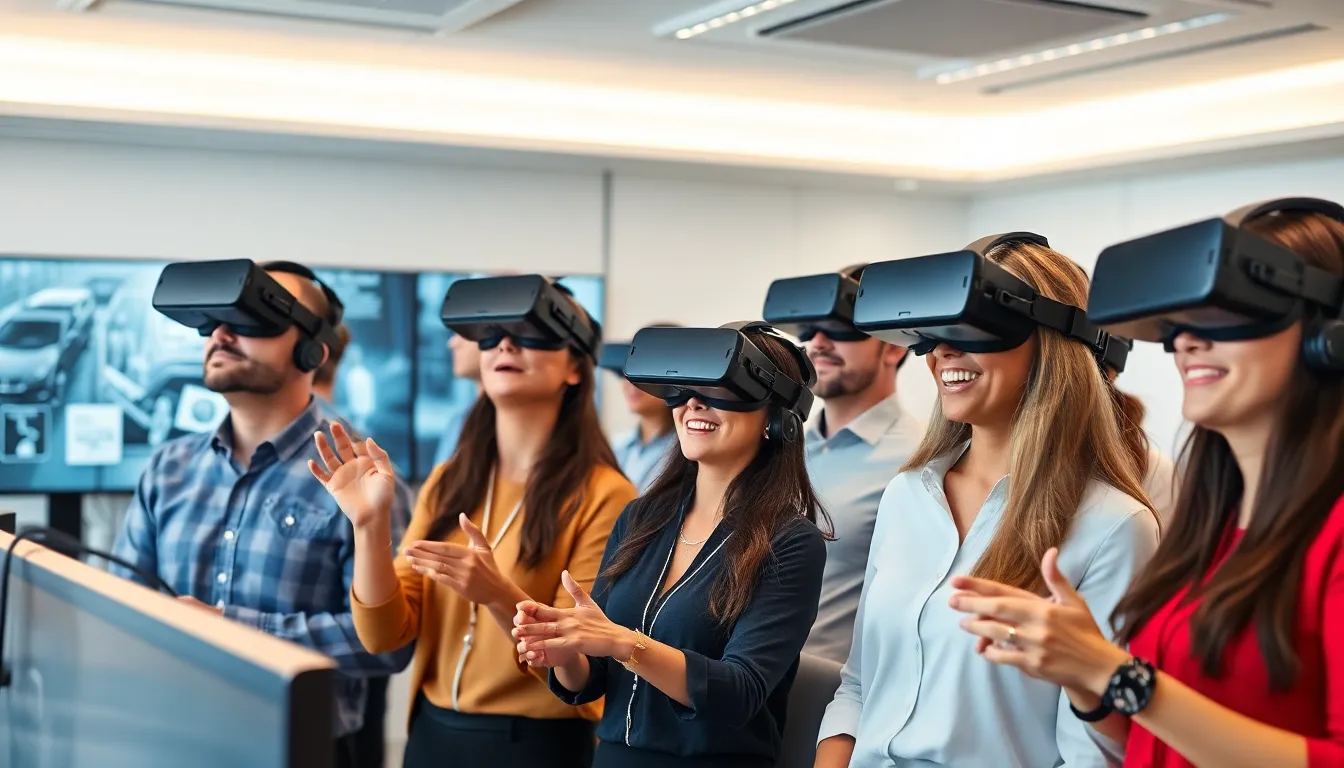Imagine exploring the ancient ruins of Rome while lounging on your couch in pajamas. Sounds like a dream, right? Welcome to the world of VR tourism, where jet lag is a thing of the past and your biggest worry is whether to wear virtual flip-flops or sneakers. This innovative technology lets travelers experience breathtaking destinations without the hassle of packing, long security lines, or overpriced airport snacks.
Table of Contents
ToggleOverview of VR Tourism
VR tourism revolutionizes the travel experience by immersing users in realistic virtual environments. This technology offers virtual visits to iconic sites, including ancient ruins and majestic landmarks. Users can explore destinations without facing the physical limitations of traditional travel.
Virtual reality headsets enable travelers to experience far-off locations from their living rooms. These experiences often include high-definition visuals and 3D audio, enhancing the sense of presence. Enhanced visuals create an atmosphere that allows users to feel as if they truly stand in these historical places.
Convenience ranks high among the benefits of VR tourism. Without worrying about packing, long security lines, or expensive food, travelers can enjoy immersive experiences at a fraction of the cost. Cost-effective virtual vacations make high-quality travel available to a wider audience.
Interactive elements further enrich VR tourism. Users can engage with environments, accessing detailed information about the sites they visit. Digital guides often accompany these experiences, providing educational insights.
Statistics illustrate the growing popularity of VR tourism. Reports show that 80% of frequent travelers express interest in virtual travel experiences. Travel agencies are increasingly incorporating VR options to cater to this demand.
Data indicates increased engagement in travel planning as users can explore multiple destinations virtually. In the digital age, VR tourism stands as a groundbreaking way to experience the world, offering both adventure and education.
Advantages of VR Tourism
VR tourism offers numerous benefits that enhance travel experiences while simplifying accessibility and engagement.
Enhanced Accessibility
Accessibility ranks high among the advantages of VR tourism. Individuals with mobility challenges can virtually visit destinations inaccessible in real life. Families and travelers with time constraints can explore iconic landmarks without lengthy travel. Furthermore, geographic limitations dissolve as anyone can experience global cultures from home. Organizations promoting tourism can reach wider audiences through virtual tours, breaking down barriers that once hindered exploration.
Immersive Experiences
Immersive experiences provide another key advantage of VR tourism. High-definition visuals transport users to stunning locations, creating realistic encounters with ancient ruins and vibrant cityscapes. 3D audio enhances the sense of presence, allowing virtual explorers to feel as if they’re genuinely on-site. Educational elements, including digital guides, deliver detailed insights about historical sites and cultures. Engagement increases significantly, with studies showing 80% of frequent travelers expressing interest in immersive virtual experiences, making VR tourism a powerful tool for adventure and learning.
Challenges of VR Tourism
VR tourism faces several challenges that impact its effectiveness and user experience.
Technological Limitations
Limitations in technology often hinder the immersive experience VR tourism aims to deliver. Hardware like headsets and controllers can be costly for users, limiting accessibility despite the growing interest. Additionally, not all users have access to high-speed internet, which is essential for seamless experiences. Developers face hurdles in creating realistic environments, as rendering high-definition graphics requires substantial processing power. Lag and low-quality visuals can lead to user dissatisfaction, impacting overall engagement. Innovations in technology must address these issues to enhance accessibility and ensure VR tourism meets user expectations.
User Acceptance
User acceptance poses a significant challenge for the widespread adoption of VR tourism. Research indicates that while 80% of frequent travelers express interest in virtual experiences, many remain hesitant due to unfamiliarity with the technology. Some individuals find VR experiences isolating compared to traditional travel, questioning the authenticity of virtual adventures. Others worry about potential motion sickness associated with VR use, leading to reluctance in fully embracing the concept. Increasing awareness and education about the advantages of VR tourism can help alleviate these concerns, promoting greater acceptance among potential users.
Future Trends in VR Tourism
Future trends in VR tourism reflect a shift toward more engaging and accessible experiences. Innovative technologies shape these changes, enhancing how individuals explore destinations.
Advancements in Technology
New technologies continue to transform VR tourism. Companies invest heavily in improved hardware, making high-quality headsets more affordable and user-friendly. Software development advances lead to realistic graphics and interactive environments, elevating immersion. The emergence of 5G networks promises faster connections, reducing lag and enhancing user experience. Virtual reality, combined with artificial intelligence, creates personalized travel experiences, tailoring recommendations based on user preferences. Together, these advancements propel the VR tourism industry forward.
Evolving Consumer Demands
Changing consumer preferences drive trends in VR tourism. Millennials and Gen Z travelers increasingly seek unique and immersive experiences. Approximately 80% of frequent travelers express a desire for virtual experiences, indicating a significant market opportunity. Users prioritize convenience and accessibility, desiring to explore cultures without extensive travel. Sustainability concerns influence preferences, as virtual tourism offers eco-friendly alternatives to traditional travel. Engaging virtual experiences not only satisfy curiosity but also foster a sense of connection to global locales. As these demands evolve, businesses will adapt to meet growing expectations.
VR tourism stands at the forefront of a transformative travel experience. It breaks down barriers and opens up a world of possibilities for exploration and education. By merging cutting-edge technology with immersive storytelling, it offers a unique way for individuals to connect with global cultures and landmarks.
The future looks promising as advancements in technology continue to enhance user experiences. As VR becomes more accessible and user-friendly, it’s likely to become a staple in travel planning. With a growing audience eager for virtual adventures, VR tourism not only enriches individual experiences but also paves the way for a more sustainable approach to exploring the world.






